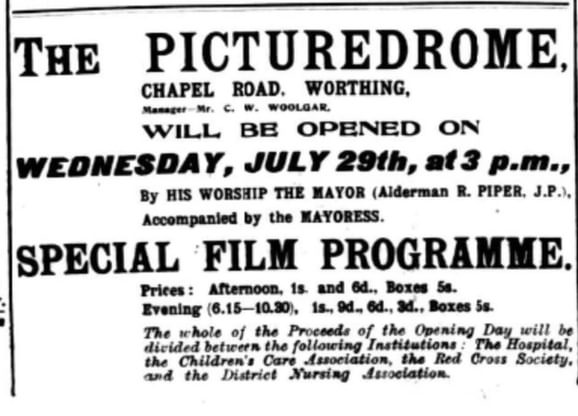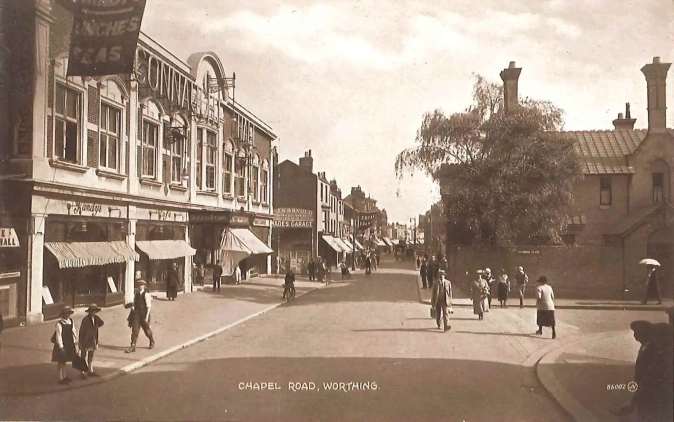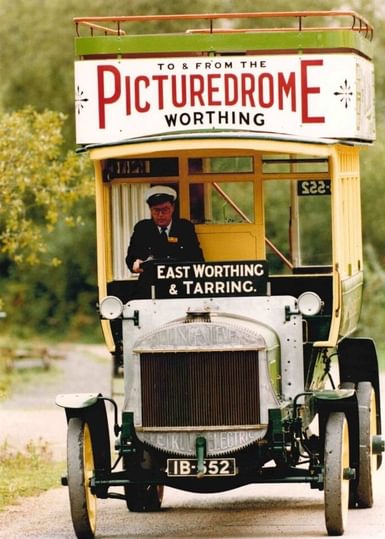
News Story
In the summer of 2024, we celebrated 110 years since the Connaught first opened as a cinema in 1914. To mark the occasion, we’re looking back at the history of our wonderful cinema and its life in the ever-changing world of film entertainment.
Don’t miss our celebrations, including a birthday film quiz and special screenings of classic films.
"As the programmer for a 110-year-old cinema, I'm very aware that it has been here long before me. And it will be here long after. I'm merely a custodian using the Connaught to entertain and educate Worthing cinema-goers. And I absolutely love my job. We always have one eye on respecting the heritage of the building and cinema as an art form. Whilst also keeping the other eye firmly on the future. Finding new films from festivals, engaging with local filmmakers and ultimately creating experiences and memories at the cinema."
Over a Century of History
The Beginnings of the Connaught Cinema
The cinema we now know as the Connaught originally opened on 29th July 1914 as The Picturedrome. It was the town’s first purpose-built cinema, which had taken just five and a half months to build. Worthing’s Mayor and Mayoress officially opened it to a large crowd that lined the streets to enter. With hundreds of requests for tickets on the first day, the takings were £38.2s.9d. This is equivalent to about £2,250 today. This was donated to four local charitable organisations.

As the film entertainment industry was still in its infancy, screenings were silent, except for accompaniment by a live orchestra. The Picturedrome had an orchestra pit that could accommodate a piano, a violin, a cello and an organ. Although it is unknown what was first screened, it is likely to have involved newsreels and military propaganda films. Just days after the cinema opened its doors, the UK was drawn into the First World War. Cinema goers wanted updates from the Front as well as light relief. By December, the cinema offered reduced ticket prices for members of the armed forces.
The video below is an example of the silent footage shown during the war. It shows soldiers having their bikes inspected along Worthing’s Marine Parade sometime between 1914 and 1918.
The Picturedrome
Over the next century and more, the cinema changed many times along with social and political developments. Within its first year, The Picturedrome adopted the slogan ‘The finest Kinema on the South Coast’. In 1916, the Connaught Hall (later The Ritz, now The Studio), opened for dances, amateur drama, and variety shows. The cinema excelled, screening exciting sporting and cultural events and Saturday morning shows for children. It also screened serialised programmes with cliff-hanger endings that encouraged customers to return.

The Connaught Hall on Chapel Road, 1920s
Throughout the 1920s and 30s, local public transport from Worthing Motor Services included a special bus, an open-top Tilling-Stevens, which could transport customers directly to the Picturedrome. The bus can now be seen on display at Amberley Museum. In the mid-1930s, The Picturedrome was one of four cinemas in Worthing, all able to screen films with sound. Due to the heavy competition from other cinemas, The Picturedrome started programming live theatre. Renamed the New Connaught Theatre in 1935, it was the first purpose-built cinema in the UK to be converted into a theatre.

The Picturedrome Bus
The New Connaught Theatre
The outbreak of the Second World War and France’s fall to Nazi occupation in the 1940s turned Worthing into a front-line coastal town. The cinema was forced to close due to the war effort. However, towards the end of the war, the theatre had opened a new repertory company. Here, future stars, including Christopher Lee and June Whitfield, would train for bigger stage and film work.
From 1950-66 the venue was known across the country as a staple in the repertory theatre scene. Productions featured actors who, whilst unknown at the time, would become household names in TV, theatre and film. This included Alan Ayckbourn, Glenda Jackson, Patricia Routledge, Ian Holm, and Harold Pinter. Also, some leading stars of the time such as Roger Moore and Frankie Howerd.
Image gallery
The Connaught & The Studio
From the mid-1960s onwards, home entertainment increased, reducing audiences and income. The business was only viable with considerable funds from the Arts Council and support from Worthing Borough Council, which now owned the venue. The removal of Arts Council funding in the 1980s meant that the venue stopped producing its own productions. Instead, it focused on a programme of touring shows alongside the cinema to appeal to a wider audience.
In the 1990s, the Ritz (now the Studio) became a full-time cinema upstairs. Meanwhile, downstairs would stage touring shows for around 13 weeks of the year. It would fulfil its original purpose as a cinema the rest of the time. The Connaught continued to work this way until the venue separated from the Council and became part of the WTM charity in 2019. Now, the Studio and the Connaught programmes enjoy a mix of cinema screenings, live performances, and comedies.

The Connaught Cinema Today
Cinema is an art form that, in its nature, evolves as quickly as any other technology. As a 20th-century invention, it has developed and changed exponentially over the decades. Cinemas, too, have had to adapt as well.
"Cinema is enduring a somewhat turbulent time right now. Back-to-back crises have affected audience behaviour and the way films are released. We were delighted to see our audience numbers pick up in 2023 and really hope that momentum continues through 2024. I really appreciate every visit that people make to us. Especially to our screenings of older films back on the big screen in all their glory."


